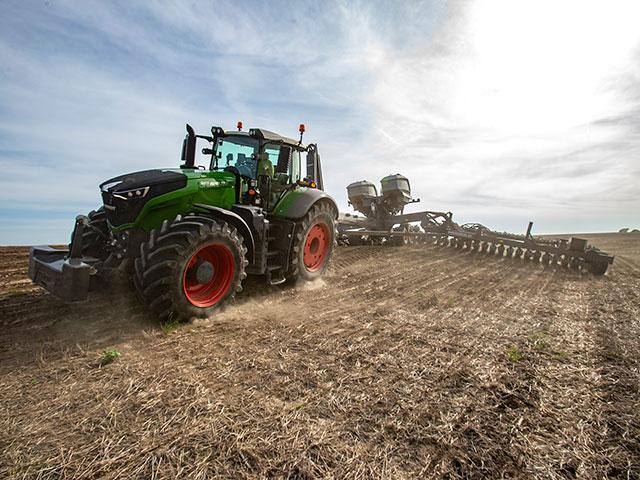Machinery Industry Sees Positive Signs
Machinery Deliveries Still Struggle, but Industry Moving Beyond COVID Headaches
Equipment manufacturers are still recovering from COVID-inflicted market disruptions -- parts shortages, extended delivery times and pinched labor markets, among them. In more recent months, higher interest rates have come into play. However, manufacturers see improvements, especially in the sale of equipment to commercial farms, according to the Association of Equipment Manufacturers (AEM).
AEM's Senior Vice President, Government and Industry Relations Kip Eideberg said in a release that supply chain pressures and a lack of workforce retention have been ongoing struggles for the industry.
"Overall, far too many equipment manufacturers still feel the impact of the COVID-19 pandemic and supply chain disruptions in operations, lead times on components, labor force participation and financial performance," Eideberg said. "And the impact of this supply chain crunch is only worsened by nationwide workforce shortages."
AEM, representing more than 1,000 members and 200 product lines, sponsors regular webinars to discuss industry trends. Charles Hart, agribusiness commodities analyst at Fitch Solutions, spoke at a recent AEM-sponsored webinar. Here are some of his key points.
-- The ag equipment market is in a good position right now, and there is some optimism moving forward. However, supply chain issues and workforce retention remain a constant struggle.
P[L1] D[0x0] M[300x250] OOP[F] ADUNIT[] T[]
-- Agricultural prices are poised to ease from the highs of 2022, but they remain elevated in recent historical terms while also remaining susceptible to bouts of heightened volatility. Beyond 2023, there is reason to expect continued normalization of prices, but a return to pre-COVID levels is not expected in the near term.
-- Interest rates and economic uncertainties are key struggles that will weigh on ag investment. Interest rates are expected to remain elevated through 2023 into 2024, which will ultimately weigh heavily on the broad ag tech market.
-- Elevated input prices will weigh on fertilizer usage rates. Energy costs are set to remain higher than pre-COVID levels. The fuel and fertilizer price surge of 2022, which had its origins at the start of the COVID-19 pandemic, is expected to weigh on production volumes during the years to come.
It is sales of larger, commercial ag tractors and combines that are doing better, according to monthly sales numbers released by AEM.
Combine sales cooled a bit this past March, according to AEM's latest Ag Tractor and Combine Report. But that number would be down from an over-the-top sales performance in February (up 132% in February 2023 compared to February 2022). Year-over-year combines sales, March 2023 compared to March 2022, were up a still-healthy 47.1%.
Manufacturers rolled 509 combines off their assembly lines in March 2023. During March a year earlier, the industry produced 346 combines. Year to date, combine sales remain impressive. For the first three months of 2023, the industry has sold 1,514 combines compared to the 751 combines sold during the first three months of 2022. That's a year-over-year increase of 101.6%.
AEM's March 2023 sales numbers for four-wheel-drive farm tractors indicate farmers are investing in horsepower -- and probably the newest technology packages hung onto them. Four-wheel-drive tractor sales for March were up 106% over March 2022 (414 units were sold in March 2023 compared to 201 units sold in March 2022). For the year through March, four-wheel-drive tractor sales are up 50.7% compared to the same three-month period in 2022.
Two-wheel-drive tractor sales may be turning a corner, but not a good one. For months, sales of two-wheel-drive tractors -- less-than-40 horsepower and 40-100 horsepower -- have been on the decline. It was no different last month. Sales of less-than-40-horsepower tractors were off 14.2% in March 2023 compared to the same month in 2022. Sales of tractors 40-100 horsepower were off 11.8% in March 2023 compared to March 2022.
Sales of two-wheel-drive tractors of 100 horsepower and more declined 6.1% in March compared to sales in March 2022 (1,857 units in 2023 vs. 1,978 units in 2022). That's the first time in quite a while that sales of 100-plus-horsepower tractors have declined in the present month compared to the same month a year earlier. These tractors are an important driver of overall commercial ag tractor sales.
To be fair, however, March 2023 number will not cause industry-wide panic. Overall sales of 100-plus-horsepower tractors for 2023 are up 5.2% compared to the first three months of 2022.
Dan Miller can be reached at dan.miller@dtn.com
Follow him on Twitter @DMillerPF
(c) Copyright 2023 DTN, LLC. All rights reserved.




